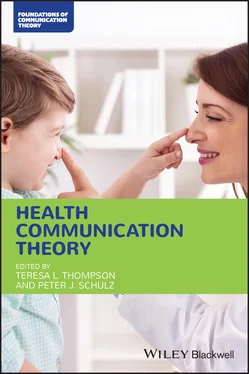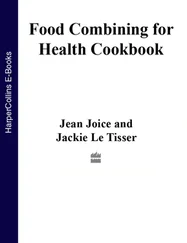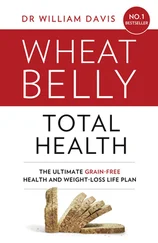108 Snyder, M. (1979). Self‐monitoring processes. Advances in Experimental Social Psychology, 12, 85–128. doi:10.1016/S0065‐2601(08)60260‐9
109 Snyder, M. (1987). Public appearances, private realities: The psychology of self‐monitoring. New York, NY, W. H. Freeman.
110 Snyder, M., & DeBono, K. G. (1985). Appeals to image and claims about quality: Understanding the psychology of advertising. Journal of Personality and Social Psychology, 49, 586–597. doi:10.1037/0022‐3514.49.3.586
111 Steindl, C., Jonas, E., Sittenthaler, S., Traut‐Mattausch, E., & Greenberg, J. (2015). Understanding psychological reactance. Zeitschrift für Psychologie, 223, 205–214. doi:10.1027/2151‐2604/a000222
112 Stephenson, M. T. (2002). Sensation seeking as a moderator of the processing of anti‐heroin PSAs. Communication Studies, 53, 358–380. doi:10.1080/10510970209388598
113 Stephenson, M. T., & Palmgreen, P. (2001). Sensation seeking, perceived message sensation value, personal involvement, and processing of anti‐marijuana PSAs. Communication Monographs, 68, 49–71. doi:10.1080/03637750128051
114 Susan G. Komen Foundation. (n.d.) Get involved. Retrieved from https://ww5.komen.org/unacceptable/?utm_source=Komen.org&utm_medium=GlobalHeaderCTA&utm_campaign=Unacceptable
115 Teeny, J., Briñol, P., & Petty, R. E. (2016). The elaboration likelihood model: Understanding consumer attitude change. In C. V. Jansson‐Boyd & M. J. Zawisza (Eds.), Routledge international handbook of consumer psychology (pp. 390–410). New York, NY: Routledge.
116 Trump, R. K. (2016). Harm in price promotions: When coupons elicit reactance. Journal of Consumer Marketing, 33, 302–310. doi:10.1108/jcm‐02‐2015‐1319
117 Van Petegem, S., Soenens, B., Vansteenkiste, M., & Beyers, W. (2015). Rebels with a cause? Adolescent defiance from the perspective of reactance theory and self‐determination theory. Child Development, 86, 903–918. doi:10.1111/cdev.12355
118 Wallston, K. A., Wallston, B. S., & DeVellis, R. (1978). Development of the Multidimensional Health Locus of Control (MHLC) Scales. Health Education Monographs, 6, 160–170.
119 Weiss, B. D. (2015). Health literacy research: Isn’t there something better we could be doing? Health Communication, 30, 1173–1175.
120 Wicklund, R. A. (1974). Freedom and reactance. Potomac, MD: Erlbaum.
121 Xu, J. (2017). The impact of locus of control and controlling language on psychological reactance and ad effectiveness in health communication. Health Communication, 32, 1463–1471. doi:10.1080/10410236.2016.1230807
122 Zhang, X., Qu, X., Tao, D., & Xue, H. (2019). The association between sensation seeking and driving outcomes: A systematic review and meta‐analysis. Accident Analysis & Prevention, 123, 222–234. doi:10.1016/j.aap.2018.11.023
123 Zuckerman, M. (1979). Sensation seeking: Beyond the optimal level of arousal. Hillsdale, NJ: Erlbaum.
124 Zuckerman, M. (1994). Behavioral expressions and biosocial bases of sensation seeking. Cambridge, UK: Cambridge University Press.
3 When Theory and Method Intertwine
Jill Yamasaki
Given the nature of interpretive/critical approaches to health communication research, it is not always possible, practical, or desirable to consider theory as distinct from methodology and representation. Theories exist in this context as explanatory concepts that are related but not unified and generated rather than extended, challenged, or confirmed. To that end, contemporary interpretive/critical scholarship often intertwines theory with method and combines findings with discussion in carefully crafted expressions (i.e. written, oral, and/or visual) that emphasize local knowledge, in‐depth understandings, and intersubjectivity. Despite these differences from theory‐driven (often post‐positivist) work, however, rigor, validity, and ethical considerations throughout the research process remain paramount.
In this chapter, I offer a brief introduction to four common theoretical frameworks that incorporate these tenets and help guide interpretive/critical health communication research. First, I present shared philosophical foundations underlying interpretive scholarship, followed by explanations of grounded theory, narrative theorizing, autoethnography, and rhetoric of health and medicine. None of these theoretical approaches or methods originated in health communication; however, they have been employed extensively in health contexts and by health communication scholars, many of whom have expanded, shaped, and/or strengthened them through health communication research.
Philosophical Foundations
Interpretive/critical scholars approach knowledge and the world in very different ways from post‐positivist theorists. Rather than engaging in a scientific search for universal explanations and causal relationships, interpretive/critical theorists instead seek in‐depth understandings of social life and lived experiences. For them, reality is subjective, multiple, and socially constructed, with participants creating, interpreting, and challenging shared meanings through communicative behavior. People build their own understandings from cultural norms, values, and beliefs, and these understandings then evolve and develop through interaction. Because we come to agreement about what is real intersubjectively, interpretive/critical scholarship does not measure the (in)accuracies of messages against an objective reality; instead, researchers embrace their own subjectivity and acknowledge that they are “interpreting others’ interpretations” (Zoller and Kline 2008, p. 93). In this double hermeneutic (Giddens 1984), interpretive/critical scholars seek to understand socially constructed realities and, in doing so, contribute to them, as well. While interpretive scholars strive for thick description of a particular context, critical scholars examine how communication in health contexts creates, reproduces, or challenges dominant power relations and ideologies (Zoller and Kline 2008).
Miller (2005) distinguished between theories that (i) examine general processes of meaning construction for consideration across situational boundaries and (ii) seek to understand local and emergent communication phenomena in specific situations and contexts (see also Dutta and Zoller 2008). Some of these theories are discussed elsewhere in this book (see, for example, Chapters 4, 5, 13, and 14). Regardless, interpretive/critical research is often viewed as “an ongoing process in which there is a continual intertwining – even a blurring – of data collection, analysis, and theorizing” (Miller 2005, p. 63). Just as meaning arises in interaction, concepts and issues of study emerge through the research process itself. Thus, like the social reality being theorized about, interpretive/critical theory is created inductively through observation and interaction. Rejecting the desirability or possibility of separating the knower from the known, researchers immerse themselves in local contexts, combine qualitative methods with their own perspectives and experiences, and seek inside understandings in research conducted jointly with participants. Accordingly, a single study often represents several theoretical commitments (e.g. grounded theory, ethnography, and narrative analysis) in what is usually a back‐and‐forth, rather than linear, process (Zoller and Kline 2008).
The following theoretical frameworks serve as popular, robust examples of the continual intertwining of data collection, analysis, and theorizing in interpretive/critical health communication research. As Zoller and Kline (2008) note, they overlap and may be employed alone as combined theory and method or used as theory, method, or both with other approaches. I offer exemplary scholarship throughout the chapter – with a focus on theory rather than method – to illustrate their growing and influential contributions to heath communication research.
Читать дальше












